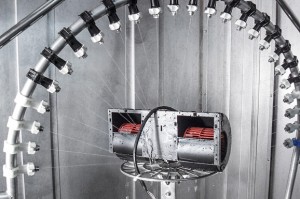Our customers expect a product to work during its entire service life. Its functionality is influenced by the design concept, production process and application. For design and production, we use recognised guidelines such as the quality certificates DIN EN ISO 9001 and ISO/TS 16949. They ensure that the limits set in the technical specification are not exceeded.
When selecting a product, assessing the conditions in which the product will be used is paramount.
This is not so easy when it comes to the actual application. Our products are used in all kinds of functional and climatic environments around the world: from minus 50 degrees Celsius in Novosibirsk to the burning heat of a rooftop in Saudi Arabia, from vibration-sensitive operation in a machine to highly sterile applications in medicine.
When selecting a product, assessing the conditions in which the product will be used is paramount. A product with the specification for operation up to 50 degrees Celsius, for example, would experience a malfunction at 80 degrees Celsius. But even within the given specifications, products cannot constantly operate at extreme values, just like you cannot permanently drive a car in first gear. If the conditions are known, more information on any special mechanical or electrical requirements is required from those on the ground. This is where the International Protection Code (IP) comes in, indicating both the protection type – dust or moisture – and the protection rating. The IPC does not provide any information, however, on how the product behaves in relation to seasonal weathering and temperature changes. A product with the protection class IPX4, for example, is only exposed to spray water for 5 minutes at room temperature. In reality, the product will put in 40,000 operating hours in a range of very different environments and thermodynamic cycles. Relying on the IP information alone is therefore misleading.
It is vital then that our technical customer advisers, acting as the interface to the customer, determine precisely what the product will be confronted with in reality. The worst-case scenario is when a product is used and operated outside of its design parameters.
International Protection Code
 The IP Code indicates how well-protected a product is against dust and moisture. The position of the digits symbolises the type of ingress. The first digit indicates the protection against solid foreign particles (dust), the second against water. The higher the number, the greater the resistance.
The IP Code indicates how well-protected a product is against dust and moisture. The position of the digits symbolises the type of ingress. The first digit indicates the protection against solid foreign particles (dust), the second against water. The higher the number, the greater the resistance.


Leave a comment